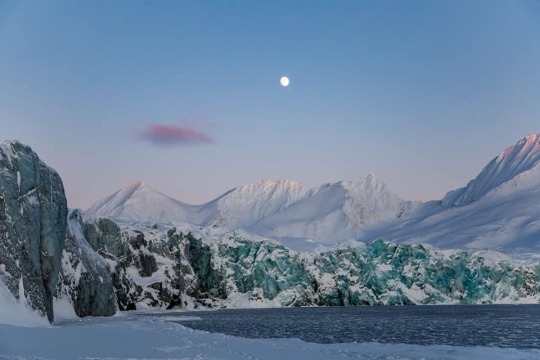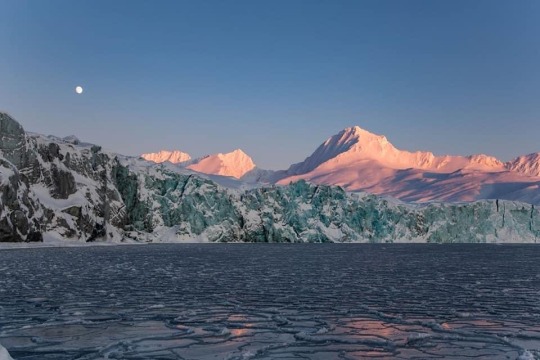#Hornsund
Explore tagged Tumblr posts
Text

Белые медведи посещают исследовательскую станцию Hornsund на Шпицбергене http://dlvr.it/T5zqqT
37 notes
·
View notes
Text
Been tagged by Mr @skogarmann to answer a few personal questions and nag a few people. 'Ere we go.
Favorite colour(s): black, blood red, deep blue; the colour of love's hair, which is aubur brown.
Last song played:
youtube
Exploring the mysterious depth of insane Eurasian ape's soul.
Currently reading: Dalej tylko pola by Michał Gołębiowski. Male midlife crisis, mountain hiking, Roman Catholic mysticism, yeah, I'm enjoying the novel quite a lot.
Currently craving:

A posting at the Hornsund polar station.
You have been tagged: @kuperjanov @satya-dawn @california-babylon @grosutina @heidanisk @smog-ktmcu5480
7 notes
·
View notes
Photo

Frank Lukasseck - Hornsund, Spitsbergen, Norway
7 notes
·
View notes
Text
Rekrutacja do Polskiej Stacji Polarnej Hornsund
Rozpocznij swoją przygodę życia na Spitsbergenie — Polska Stacja Polarna Hornsund czeka! Czy marzyłeś o pracy w miejscu, gdzie cywilizacja graniczy z nietkniętą dzikością przyrody? Gdzie z jednej strony codzienność to naukowe odkrycia, a z drugiej — możliwość podziwiania zorzy polarnej, lodowców i bezkresu śnieżnej pustki? Polska Stacja Polarna Hornsund na Spitsbergenie, będąca jednym z najdalej…
0 notes
Text


First sunrise over Hornsund, Svalbard since October (14.02.2022)
photo by Joanna Perchaluk
2K notes
·
View notes
Photo

A harbor seal resting on a slab of ice in Hornsund, South Svalbard, Norway.
60 notes
·
View notes
Photo

Arctic Fox coming out of its winter coat, Gnalodden, Hornsund, Spitsbergen, Svalbard. The foxes appear to taking adult Black-legged Kittiwakes that are landing on the tundra slope below the bird cliff to pick up nesting material to create a level nesting platform on the narrow ledges and the sheer cliffs. Always incredible to observe the locations where kittiwakes breed. #arcticfox #gnalodden #hornsund #spitsbergen #svalbardwildlife #svalbard (at Hornsund) https://www.instagram.com/p/Ceo3wufDbVC/?igshid=NGJjMDIxMWI=
0 notes
Photo

Zaległy post! Niby Morze Norweskie nie jest takie małe a we wtorek, 20.08.2018 najpierw o świcie doszło do nieplanowanego i przypadkowego z Oceanią w drodze na Wyspy Owcze a wieczorem tego samego dnia Horyzont II w drodze do Polskiej Stacji Polarnej im. Stanisława Siedleckiego w Hornsundzie. Były to pierwsze statki jakie zobaczyliśmy po opuszczeniu Svalbardu. Dopiero potem inne statki i platformy. Jak na razie warunki wiatrowe bardzo korzystne. Pierwsze zachody i wschody Słońca. Co raz cieplej, w końcu cały czas płyniemy w stronę ciepłego południa. http://eur-share.inreach.garmin.com/magnuszaremba https://www.marinetraffic.com/en/ais/home/shipid:316513/zoom:14 https://www.vesselfinder.com/?mmsi=261025570 https://www.sailwx.info/shiptrack/shipposition.phtml?call=SPG3930 Eugeniusz Moczydlowski #Arktyka #Arktyka2019 #MagnusZaremba #gorączkapolarna #Svalbard #Spitsbergen #SpitsbergenZachodni #Hornsundbanken #Hornsunddjupet #ZiemiaWedelJarslberga #WedelJarlsbergLand #Hornsund #Isbjørnhamna #ZatokaBiałegoNiedźwiedzia #Krosvika #Hansvika #PolskaStacjaPolarna #PolskaStacjaPolarnaHornsund #IGFPAN #InstytutGeofizykiPolskiejAkademiiNauk #IGF #InstytutGeofizyki #PAN #PolskaAkademiaNauk #MorzeNorweskie #RVOceania #SYOceania #HoryzontII #Horyzont #Arctic #Arctic2019 #arcticsyndrome #Isfjord #Adventfjord #PortofLongyearbyen #PolishPolarStationHornsund #PolishPolarStation #PolishAcademyofSciences #IGPAS #InstituteofGeophysicsPolishAcademyofSciences #CatS61 #NorwegianSea #Norskehavet (w: Norwegian Sea) https://www.instagram.com/p/B1ltuMLoshS/?igshid=1uwersval64fu
#arktyka#arktyka2019#magnuszaremba#gorączkapolarna#svalbard#spitsbergen#spitsbergenzachodni#hornsundbanken#hornsunddjupet#ziemiawedeljarslberga#wedeljarlsbergland#hornsund#isbjørnhamna#zatokabiałegoniedźwiedzia#krosvika#hansvika#polskastacjapolarna#polskastacjapolarnahornsund#igfpan#instytutgeofizykipolskiejakademiinauk#igf#instytutgeofizyki#pan#polskaakademianauk#morzenorweskie#rvoceania#syoceania#horyzontii#horyzont#arctic
0 notes
Text
Favorite cottagecore-esque items from Ikea
Hornsund headboard x, bedside table x
Kirskål comforter set x
Årstid table lamp x
Solskur table lamp x
Sånglärka children's rug x, cushion x
Hildigard rug x
Bokarv tapestry cushion cover x
Blomdoft candle x
Anilinare stationary box x, desk organizer x
Upplaga dinnerware set x
Smakbit serving plate x
Konungslig wine glass x
Sockerärt vase/jug x
Godtagbar vase x, x
Blanda matt wooden serving bowl x
Gottgöra lantern x
Samverka tealight holder x, candle dish x
Skurar candle holder x, candle dish x, hanging planter x
Solvinden solar-powered light x, x
Balungen soap dispenser x, bathroom tumbler x
119 notes
·
View notes
Text
Polar bear hunting a reindeer caught on tape for first time | Science


In August 2020, biologist Izabela Kulaszewicz was settling in for a lazy evening at the Polish Polar Station, Hornsund, on Norway’s Svalbard archipelago, when a message came over the radio. Two researchers had just spotted a polar bear. Having wanted to see one all summer, Kulaszewicz, of the University of Gdańsk, and a handful of other scientists rushed outside.
About 100 meters away, a chubby female polar bear was sniffing the air and walking toward the coast. Soon, she disappeared into a dip in the tundra, only to emerge seconds later, galloping toward several reindeer on the shoreline. She went after one bull and chased it into the sea (see video, above). Less than 25 meters offshore, the predator sunk her claws in the reindeer’s back, bit its neck, and forced it underwater. The reindeer was dead within 1 minute.
The cook at the research station caught everything on film, making it the first video evidence of polar bears hunting and eating reindeer—something that had long been assumed, but never clearly seen.
“I was shocked,” Kulaszewicz says. “I thought reindeer were good swimmers, and the bear would have a bigger problem catching the reindeer. But it was totally different.” After dragging the carcass ashore, the bear ate more than half of it in one sitting.
Polar bears haven’t always hunted reindeer. Their favorite dish is seal—which they catch through holes in the ice far offshore. The blubber from one adult ringed seal can help a polar bear survive for more than 10 days. If they eat enough blubber, they can fast for months.
But as climate change melts sea ice earlier in the year, more polar bears are forced to spend their summers foraging on land. Polar bears have been seen eating bird eggs, rodents, and even trash at landfills. “If it moves, or even doesn’t move, there’s a good chance they’ll try to eat it,” says polar bear biologist Andrew Derocher of the University of Alberta, Edmonton, who wasn’t involved in the new study.
Kulaszewicz and her colleagues describe the remarkable hunt in a paper published earlier this month in Polar Biology. The paper includes at least 12 other reports of bears pursuing or eating reindeer, suggesting these events are becoming more frequent, they write. But whereas previous reports don’t always note whether the reindeer were killed or scavenged, the new report shows polar bears can successfully hunt reindeer, Derocher says. “We don’t see these sorts of events very often. We quite often see the aftereffects.”
The study’s senior author, Gdańsk ecologist Lech Stempniewicz, says he finds it extraordinary that the hunt took place in the sea. Reindeer can swim and run well over long distances, but “in a triathlon consisting of sprinting; swimming in shallow waters with uneven, rocky bottoms, skerries, and ice floes; and wrestling, the bear is second to none,” Stempniewicz, who has worked in the Arctic for more than 50 years, wrote in an email.
Individual bears like this one can learn unique behaviors, Derocher says, and they latch onto whatever works. “I would bet that that bear comes back year after year to the Polish station at Hornsund and will keep trying to do the same thing,” Derocher says. Sure enough, researchers saw the same bear at the water’s edge with another reindeer carcass 1 day after the first hunt. Seemingly still stuffed, it left most of the second kill for the foxes and gulls.
Having evolved without predators, the approximately 20,000 reindeer that live on Svalbard are enticing prey. Polar bears could supplement their diets with reindeer in the summer when sea ice is low, Stempniewicz says.
“We could view this as a little piece of good news, at least for the local polar bears,” says Steven Amstrup, chief scientist at Polar Bears International. But he stresses that new hunting behaviors on land will not make up for the loss of the sea ice habitat where polar bears evolved. “It’s a really interesting observation, and it may have some near-term value for some number of bears,” Amstrup says, “but in the long run, I can’t imagine that it’s really going to be the salvation of polar bears.”
New post published on: https://livescience.tech/2021/10/24/polar-bear-hunting-a-reindeer-caught-on-tape-for-first-time-science/
2 notes
·
View notes
Photo

Meteorologia
Patrycja, Wojteck et Patrycja* se relaient pour observer le ciel. Un sacré boulot car pendant un an ils sont de garde un jour sur trois et doivent rapporter le temps qu’il fait toutes les trois heures à la météo norvégienne. Ils ont hâte de retrouver un rythme de sommeil un peu plus normal.
Ici, la température de l’air augmente, comme ailleurs dans l’Arctique. Tout le monde parle encore du mois de juillet dernier où le record du Svalbard depuis le début des observations a été battu avec plus de 20°C à Longyearbyen. La mine a du fermé exceptionnellement à cause des parois qui fondaient. Chaud.
*photo piquée sur la page facebook de la station de Hornsund
1 note
·
View note
Text
Photo by | Ice patterns the tundra in Gnålodden, Svalbard, in March. Only a few...
Photo by | Ice patterns the tundra in Gnålodden, Svalbard, in March. Only a few…
Photo by @acacia.johnson | Ice patterns the tundra in Gnålodden, Svalbard, in March. Only a few months later, when migratory animals return for the summer, this point in Hornsund will be home to a teeming seabird colony. Follow me at @acacia.johnson for more from the Arctic and beyond. Source

View On WordPress
0 notes
Text
Naukowcy sprawdzają, skąd w norweskim fiordzie biorą się metale ciężkie | Nauka w Polsce
0 notes
Text
Polar bears eating reindeer: normal behaviour or result of climate change?
Polar bears eating reindeer: normal behaviour or result of climate change?
Alexey Seafarer/shutterstock Recently, scientists in Hornsund, Svalbard – a Norwegian archipelago in the Arctic ocean – witnessed a polar bear pursuing a reindeer into the sea before killing it, dragging it ashore and eating it. The video that they captured was widely shared on news and social media platforms. Then, two days later, they saw the same bear beside a second fresh reindeer kill. Their…

View On WordPress
0 notes
Text
I am mentioned as a member of this years polar expedition to Hornsund Svalbard on polarniczki project website i am so honored im literally crying
2 notes
·
View notes
